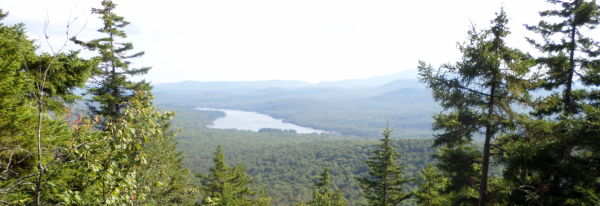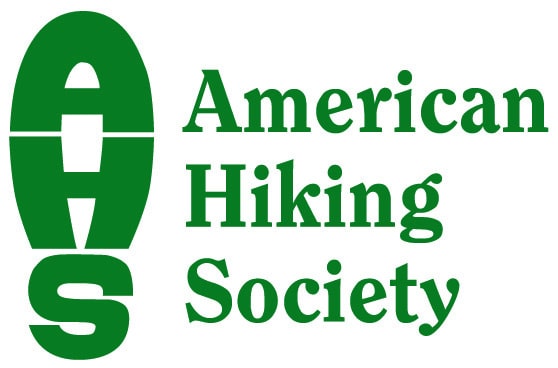Vermont – Cross Vermont Trail Association
Cross Vermont Trail; quiet ponds and summit vistas stacked trail network
Click here to go back to superiortrails.michelobultra.com to cast your vote!

Summary
Link together quiet ponds, summit vistas by restoring classic hiking trails built by CCC and building new accessible multi-use trails so that visitors to state campgrounds, and people who live nearby, can walk or bike safe off road paths from where they are to the trail they want to visit, without having to drive – inviting more use of trails and less driving in Groton State Forest, Vermont.


Project Description
We are connecting the trailheads of primitive hiking trails that circle scenic ponds and climb to mountain vistas in Vermont’s Groton State Forest together with a network of multi-use trails that provide safe, scenic, non-motorized access from state park campgrounds to trailheads, and furthermore, to the villages and schools beyond the State Forest via the Cross Vermont Trail.
Cross Vermont Trail Association is working to make real the vision of “Trails for all Americans, asking “What would it take for all Americans to be able to go out their front doors and within fifteen minutes be on trails that wind through their cities, towns or villages and brings them back without retracing steps? Along the way they could pass shops and restaurants, go to work, school or a park, visit an historic site or the zoo, and experience the great outdoors without a car or bus. If they were to follow the right path, the trail could take them into the countryside or possibly link up with another trail that would lead them into the deepest wilderness or to the highest mountain . . . ” (Report of the National Trails Agenda Project).
One major way we are working to make this vision real is by helping to build a connected trail network within Vermont’s Groton State Forest. Groton is the second largest state forest in Vermont, and has been a destination for outdoor enthusiasts since the early 1900s. The attractions in the forest are the excellent campgrounds, the many quiet ponds, and the mountains with good vistas. Traditionally, these have all been treated separately, with, for example, separate, unconnected “out and back” trails for each summit and around each pond. To get to them from the campgrounds, one had to drive to the trailheads.
For several years now Cross Vermont Trail Association has been working with the State Forest to help increase the use of trails in the Forest, and decrease the amount of driving, by creating a safe, accessible, non-motorized trail network that would connect together all of these destinations. The network would be “stacked”, with loops and destinations nearest the campgrounds available on more accessible trails, and with increasingly primitive and difficult options maintained farther out from the campgrounds.
When completed, the Telephone Line Trail, Rail Trail Connector Trail and expanded Peacham Bog Loop trail will provide over 20 miles of gentle, rolling non-motorized multi-use trail linking together a series of shorter hiking trail spurs climbing up to nearby summits, or descending to backcountry ponds.
On the multi-use trails, over a mile, scattered in various locations, of muddy areas, steep areas, and failed structures (bog bridging) create numerous road blocks to most people which prevents these trails from growing in use, currently. These “road blocks” are easily fixed given enough materials on hand and skilled leadership and good tools to leverage the efforts of interested volunteers.
On the classic hiking trails linked together by these multi-use connectors, old stone staircases from the Civilian Conservation Corps are still strong, but are washed out beneath and on the sides, and so are “perched”. Again this creates a bottle neck to many users who do not want to clamber up the eroding gully. Given time to dedicate to the job, this problem could also be solved in a straight forward manner.
Currently these trails are being built and maintained by a partnership of the Vermont State Parks, Vermont Youth Conservation Corps and the Cross Vermont Trail Association. Funding from Michelob Ultra would be used to support and leverage this partnership by helping to buy stone, gravel and other material, by paying for costs of small machinery to stage the material on the trail, and paying for staff time to coordinate and lead the work of volunteers and youth groups.
The simple goal is to increase trail use by visitors to the campgrounds in the state forest, and to decrease driving from campgrounds to trailheads, by creating attractive, accessible connector trails that lead from the campgrounds, along multi-use accessible trails, to primitive hiking trail spurs, which are also attractive and inviting and restored to their original quality – creating a “stacked network” that progresses from easier to more difficult, radiating out from the campgrounds, and ultimately connected via the Cross Vermont Trail itself to the communities neighboring the State Forest and to the width of the state beyond.
VOTING OPENS SEPTEMBER FIRST TO OCTOBER 31. CAST YOUR VOTE HERE SUPERIORTRAILS.MICHELOBULTRA.COM.
 |
 |
